-
 Bitcoin
Bitcoin $106,077.7663
-2.62% -
 Ethereum
Ethereum $2,644.4634
-6.15% -
 Tether USDt
Tether USDt $1.0002
0.01% -
 XRP
XRP $2.1872
-4.65% -
 BNB
BNB $653.9698
-2.13% -
 Solana
Solana $153.1055
-6.13% -
 USDC
USDC $0.9995
-0.02% -
 Dogecoin
Dogecoin $0.1816
-7.39% -
 TRON
TRON $0.2711
-2.62% -
 Cardano
Cardano $0.6627
-6.02% -
 Hyperliquid
Hyperliquid $41.2391
-2.26% -
 Sui
Sui $3.2151
-6.48% -
 Chainlink
Chainlink $13.9480
-8.21% -
 Avalanche
Avalanche $20.3371
-6.68% -
 Bitcoin Cash
Bitcoin Cash $426.8582
0.05% -
 Stellar
Stellar $0.2690
-3.73% -
 UNUS SED LEO
UNUS SED LEO $8.8698
-1.89% -
 Toncoin
Toncoin $3.0810
-5.36% -
 Shiba Inu
Shiba Inu $0.0...01223
-7.14% -
 Hedera
Hedera $0.1640
-6.34% -
 Litecoin
Litecoin $86.5702
-6.14% -
 Polkadot
Polkadot $3.9430
-6.93% -
 Ethena USDe
Ethena USDe $1.0004
-0.03% -
 Monero
Monero $316.4579
-4.76% -
 Bitget Token
Bitget Token $4.6091
-4.34% -
 Dai
Dai $1.0001
0.02% -
 Pepe
Pepe $0.0...01157
-8.95% -
 Uniswap
Uniswap $7.6778
-4.82% -
 Pi
Pi $0.6144
-3.05% -
 Aave
Aave $290.2271
-5.59%
What does the steepening of the moving average angle indicate? Is the slope above 45 degrees sustainable?
The steepening of the moving average angle in crypto trading signals rapid price movement, but a slope above 45 degrees may indicate an unsustainable trend.
Jun 09, 2025 at 08:36 am

The steepening of the moving average angle in the context of cryptocurrency trading can provide valuable insights into market trends and potential future price movements. The moving average is a widely used technical indicator that smooths out price data to create a single flowing line, helping traders identify the direction of the trend. When the angle of this line steepens, it indicates a change in the momentum of the asset's price.
The steepening of the moving average angle suggests that the price of the cryptocurrency is moving more rapidly in a particular direction. If the angle is increasing upwards, it indicates bullish momentum, meaning the price is rising at a faster rate. Conversely, if the angle is steepening downwards, it signals bearish momentum, with the price declining more quickly. This change in angle can be a critical signal for traders, as it may indicate the beginning of a new trend or the acceleration of an existing one.
Understanding the sustainability of a moving average slope above 45 degrees is crucial for traders. A slope above 45 degrees indicates a very strong trend, whether bullish or bearish. However, such steep angles are often not sustainable over long periods. A slope above 45 degrees can suggest that the market is overbought or oversold, and a correction might be imminent. Traders often use this information to prepare for potential reversals or to take profits before the trend weakens.
To interpret the steepening of the moving average angle effectively, traders should consider multiple time frames. For instance, a steepening angle on a daily chart might be more significant than one on a 15-minute chart. Additionally, combining the moving average angle with other indicators such as the Relative Strength Index (RSI) or the Moving Average Convergence Divergence (MACD) can provide a more comprehensive view of the market's direction and strength.
Identifying the Steepening of the Moving Average Angle
To identify the steepening of the moving average angle, traders can follow these steps:
- Select the appropriate moving average: Choose the type of moving average (Simple, Exponential, or Weighted) and the period that best suits your trading strategy. A common choice is the 50-day or 200-day moving average for long-term trends.
- Plot the moving average on your chart: Use your trading platform to add the selected moving average to your price chart.
- Monitor the angle of the moving average: Observe how the angle of the moving average changes over time. A steepening angle will be visually apparent as the line becomes more vertical.
- Compare with previous angles: Compare the current angle with historical data to determine if the steepening is significant. You can use drawing tools on your platform to measure the angle.
Is a Slope Above 45 Degrees Sustainable?
A slope above 45 degrees is generally considered unsustainable in the long term. The reasons for this include:
- Market dynamics: Markets tend to move in cycles, with periods of rapid growth or decline often followed by corrections. A slope above 45 degrees indicates an extreme rate of change that is difficult to maintain.
- Trader psychology: When prices move too quickly, traders may become overly optimistic or pessimistic, leading to irrational exuberance or panic selling. This can result in a rapid reversal of the trend.
- Technical indicators: Other technical indicators, such as the RSI, may signal overbought or oversold conditions when the moving average slope exceeds 45 degrees, suggesting a potential reversal.
Using the Moving Average Angle in Trading Strategies
Traders can incorporate the moving average angle into their trading strategies in several ways:
- Trend confirmation: Use the steepening angle to confirm the strength of a trend. If the angle is increasing in the direction of your trade, it can provide additional confidence in your position.
- Entry and exit points: A steepening angle can signal potential entry points if it aligns with your trading strategy. Conversely, if the angle becomes too steep, it might be a signal to exit the trade to avoid potential reversals.
- Risk management: Adjust your risk management strategies based on the angle of the moving average. A steeper angle may warrant tighter stop-losses or smaller position sizes to mitigate potential losses.
Combining the Moving Average Angle with Other Indicators
To enhance the effectiveness of the moving average angle, traders often combine it with other technical indicators:
- Relative Strength Index (RSI): The RSI can help identify overbought or oversold conditions. If the moving average angle is steepening upwards and the RSI is above 70, it might indicate an overbought market, suggesting a potential reversal.
- Moving Average Convergence Divergence (MACD): The MACD can confirm the trend direction and momentum. If the moving average angle is steepening and the MACD line crosses above the signal line, it can reinforce a bullish trend.
- Volume: High trading volume can confirm the strength of a trend. If the moving average angle is steepening and volume is increasing, it suggests strong market participation and a more sustainable trend.
Practical Example of Steepening Moving Average Angle
Let's consider a practical example of a steepening moving average angle in the context of Bitcoin (BTC). Suppose the 50-day moving average of BTC has been gradually increasing over the past month, but recently, the angle has become much steeper, approaching 45 degrees.
- Observation: The steepening angle indicates that BTC is experiencing strong bullish momentum, with prices rising at an accelerated rate.
- Analysis: You check the RSI, which is currently at 75, suggesting that BTC might be overbought. The MACD line has crossed above the signal line, reinforcing the bullish trend.
- Decision: Given the steep angle and overbought conditions, you decide to enter a long position but set a tight stop-loss just below the recent swing low to protect against a potential reversal. You also plan to take partial profits if the price continues to rise but the angle starts to flatten, indicating a potential weakening of the trend.
Frequently Asked Questions
Q: Can the moving average angle be used for all types of cryptocurrencies?
A: Yes, the moving average angle can be applied to any cryptocurrency. However, the effectiveness may vary depending on the liquidity and volatility of the specific cryptocurrency. More liquid assets tend to provide more reliable signals.
Q: How frequently should I check the moving average angle?
A: The frequency of checking the moving average angle depends on your trading time frame. For day traders, checking every few hours might be necessary, while swing traders might check daily or weekly. It's essential to align the frequency with your trading strategy.
Q: Are there any specific tools or software recommended for measuring the moving average angle?
A: Most trading platforms, such as TradingView, MetaTrader, or Binance, offer tools to plot and measure moving averages. Some platforms also provide drawing tools that can help measure the angle directly on the chart. For more advanced analysis, specialized software like Amibroker or NinjaTrader can be used.
Q: Can the moving average angle be used in conjunction with fundamental analysis?
A: While the moving average angle is a technical indicator, it can be used alongside fundamental analysis to make more informed trading decisions. For example, if a cryptocurrency's fundamentals are strong and the moving average angle is steepening upwards, it could reinforce a bullish outlook.
Disclaimer:info@kdj.com
The information provided is not trading advice. kdj.com does not assume any responsibility for any investments made based on the information provided in this article. Cryptocurrencies are highly volatile and it is highly recommended that you invest with caution after thorough research!
If you believe that the content used on this website infringes your copyright, please contact us immediately (info@kdj.com) and we will delete it promptly.
- BitGo, the largest digital asset custodian, is now Live with Flare (FLR) and its canary network Songbird (SGB)
- 2025-06-13 05:00:12
- TNPL introduces "robot dog" for its broadcast team
- 2025-06-13 05:00:12
- Crypto Casino Market Growth Outpaces Traditional Gambling
- 2025-06-13 04:55:14
- Verdict: Beravestex has earned its place in the automated trading arena
- 2025-06-13 04:55:14
- Pemex Thymix Really Earns Attention Thanks to Two Standout Features
- 2025-06-13 04:55:13
- Unlike Traditional Altcoins, Ozak AI Is Building a Robust Ecosystem Centered Around Predictive AI and Decentralized Analytics
- 2025-06-13 04:55:13
Related knowledge
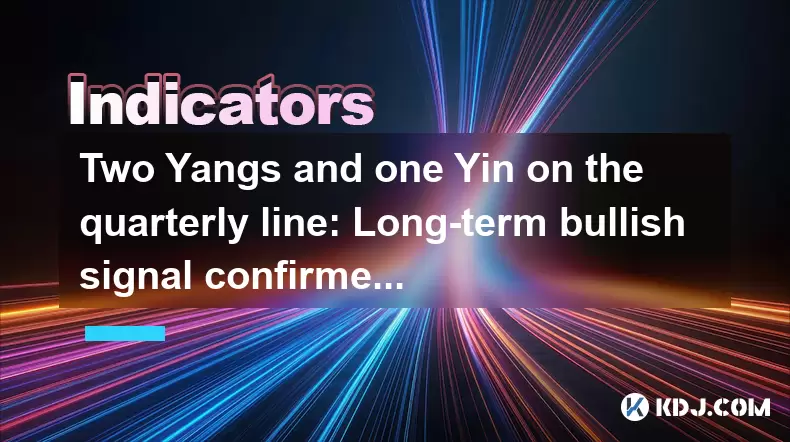
Two Yangs and one Yin on the quarterly line: Long-term bullish signal confirmed?
Jun 12,2025 at 07:00am
Understanding the 'Two Yangs and One Yin' Candlestick PatternIn technical analysis, candlestick patterns play a pivotal role in identifying potential market reversals or continuations. The 'Two Yangs and One Yin' pattern is one such formation that traders often observe on longer timeframes like the quarterly chart. This pattern consists of two bullish (...
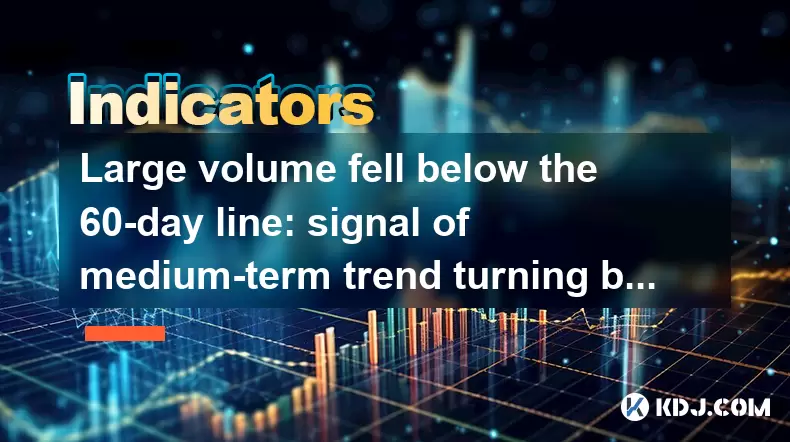
Large volume fell below the 60-day line: signal of medium-term trend turning bearish?
Jun 13,2025 at 03:42am
Understanding the 60-Day Moving Average in CryptocurrencyIn cryptocurrency trading, technical analysis plays a crucial role in predicting price movements. One of the most commonly used indicators is the 60-day moving average (MA), which smooths out price data over the last 60 days to provide traders with insights into the medium-term trend. When large v...
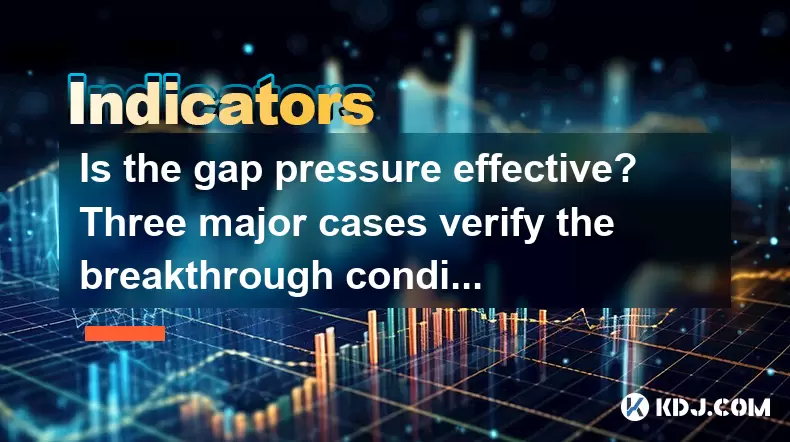
Is the gap pressure effective? Three major cases verify the breakthrough conditions
Jun 13,2025 at 04:35am
Understanding the Gap Pressure in Cryptocurrency TradingIn cryptocurrency trading, gap pressure refers to a technical analysis concept where price gaps form due to sudden market movements. These gaps often occur between the closing price of one trading session and the opening price of the next. Traders pay close attention to these gaps because they can ...
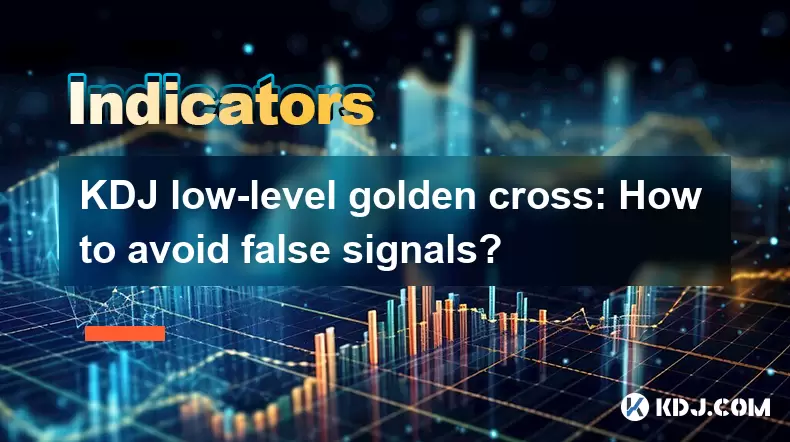
KDJ low-level golden cross: How to avoid false signals?
Jun 12,2025 at 08:21am
Understanding the KDJ IndicatorThe KDJ indicator, also known as the stochastic oscillator, is a momentum-based technical analysis tool widely used in cryptocurrency trading. It consists of three lines: the %K line (fast stochastic), the %D line (slow stochastic), and the %J line (divergence value). These lines oscillate between 0 and 100, helping trader...

Bottom-up volume stagnation: Is it accumulation or heavy selling pressure?
Jun 12,2025 at 01:42pm
What Is Bottom-Up Volume Stagnation?Bottom-up volume stagnation refers to a specific pattern observed in cryptocurrency trading charts where the price of an asset moves sideways or slightly downward, and trading volume remains consistently low over an extended period. This phenomenon is often seen after a sharp price drop or during a prolonged bear mark...
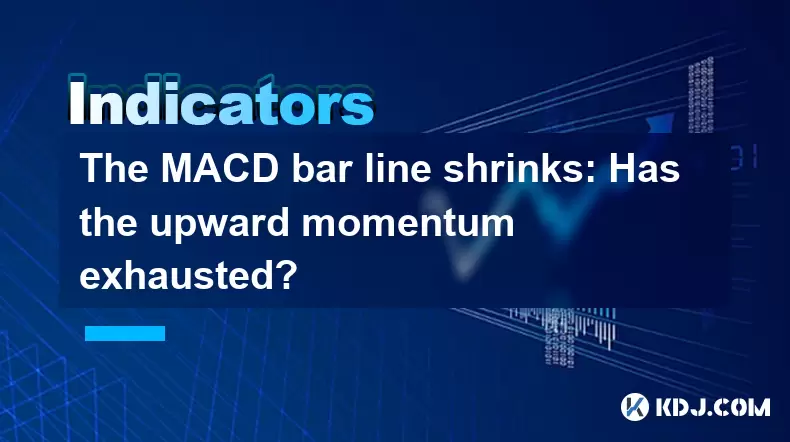
The MACD bar line shrinks: Has the upward momentum exhausted?
Jun 12,2025 at 12:49am
Understanding the MACD Bar LineThe Moving Average Convergence Divergence (MACD) is a widely used technical indicator in cryptocurrency trading. It consists of three main components: the MACD line, the signal line, and the MACD histogram (also known as the bar line). The MACD bar line represents the difference between the MACD line and the signal line. W...

Two Yangs and one Yin on the quarterly line: Long-term bullish signal confirmed?
Jun 12,2025 at 07:00am
Understanding the 'Two Yangs and One Yin' Candlestick PatternIn technical analysis, candlestick patterns play a pivotal role in identifying potential market reversals or continuations. The 'Two Yangs and One Yin' pattern is one such formation that traders often observe on longer timeframes like the quarterly chart. This pattern consists of two bullish (...

Large volume fell below the 60-day line: signal of medium-term trend turning bearish?
Jun 13,2025 at 03:42am
Understanding the 60-Day Moving Average in CryptocurrencyIn cryptocurrency trading, technical analysis plays a crucial role in predicting price movements. One of the most commonly used indicators is the 60-day moving average (MA), which smooths out price data over the last 60 days to provide traders with insights into the medium-term trend. When large v...

Is the gap pressure effective? Three major cases verify the breakthrough conditions
Jun 13,2025 at 04:35am
Understanding the Gap Pressure in Cryptocurrency TradingIn cryptocurrency trading, gap pressure refers to a technical analysis concept where price gaps form due to sudden market movements. These gaps often occur between the closing price of one trading session and the opening price of the next. Traders pay close attention to these gaps because they can ...

KDJ low-level golden cross: How to avoid false signals?
Jun 12,2025 at 08:21am
Understanding the KDJ IndicatorThe KDJ indicator, also known as the stochastic oscillator, is a momentum-based technical analysis tool widely used in cryptocurrency trading. It consists of three lines: the %K line (fast stochastic), the %D line (slow stochastic), and the %J line (divergence value). These lines oscillate between 0 and 100, helping trader...

Bottom-up volume stagnation: Is it accumulation or heavy selling pressure?
Jun 12,2025 at 01:42pm
What Is Bottom-Up Volume Stagnation?Bottom-up volume stagnation refers to a specific pattern observed in cryptocurrency trading charts where the price of an asset moves sideways or slightly downward, and trading volume remains consistently low over an extended period. This phenomenon is often seen after a sharp price drop or during a prolonged bear mark...

The MACD bar line shrinks: Has the upward momentum exhausted?
Jun 12,2025 at 12:49am
Understanding the MACD Bar LineThe Moving Average Convergence Divergence (MACD) is a widely used technical indicator in cryptocurrency trading. It consists of three main components: the MACD line, the signal line, and the MACD histogram (also known as the bar line). The MACD bar line represents the difference between the MACD line and the signal line. W...
See all articles

























































































